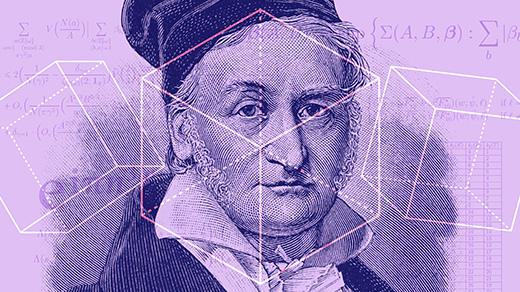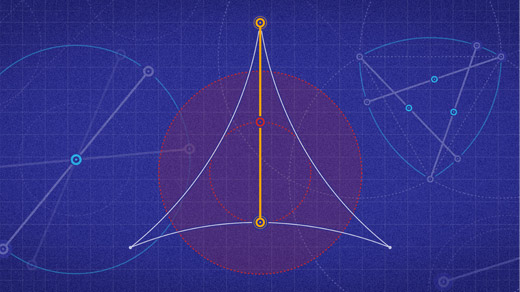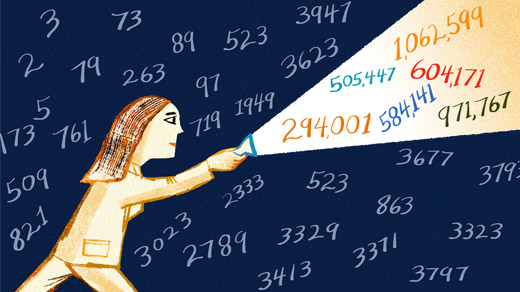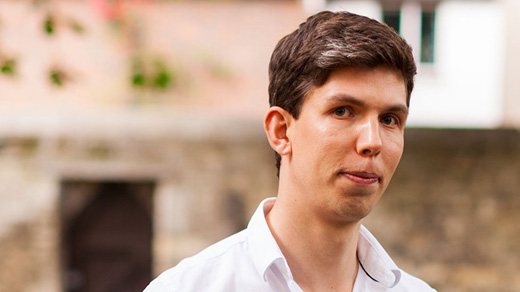What's up in
Prime numbers
Latest Articles
How Randomness Improves Algorithms
Unpredictability can help computer scientists solve otherwise intractable problems.
Teenager Solves Stubborn Riddle About Prime Number Look-Alikes
In his senior year of high school, Daniel Larsen proved a key theorem about Carmichael numbers — strange entities that mimic the primes.
A Numerical Mystery From the 19th Century Finally Gets Solved
Two mathematicians have proven Patterson’s conjecture, which was designed to explain a strange pattern in sums involving prime numbers.
A Question About a Rotating Line Helps Reveal What Makes Real Numbers Special
The Kakeya conjecture predicts how much room you need to point a line in every direction. In one number system after another — with one important exception — mathematicians have been proving it true.
How Can Infinitely Many Primes Be Infinitely Far Apart?
Mathematicians have been studying the distribution of prime numbers for thousands of years. Recent results about a curious kind of prime offer a new take on how spread out they can be.
How Do Mathematicians Know Their Proofs Are Correct?
What makes a proof stronger than a guess? What does evidence look like in the realm of mathematical abstraction? Hear the mathematician Melanie Matchett Wood explain how probability helps to guide number theorists toward certainty.
A Solver of the Hardest Easy Problems About Prime Numbers
On his way to winning a Fields Medal, James Maynard has cut a path through simple-sounding questions about prime numbers that have stumped mathematicians for centuries.
Graduate Student’s Side Project Proves Prime Number Conjecture
Jared Duker Lichtman, 26, has proved a longstanding conjecture relating prime numbers to a broad class of “primitive” sets. To his adviser, it came as a “complete shock.”
Mathematicians Clear Hurdle in Quest to Decode Primes
Paul Nelson has solved the subconvexity problem, bringing mathematicians one step closer to understanding the Riemann hypothesis and the distribution of prime numbers.








